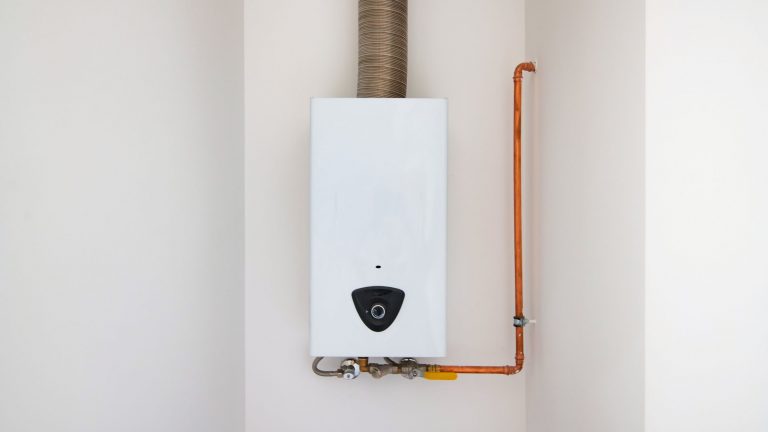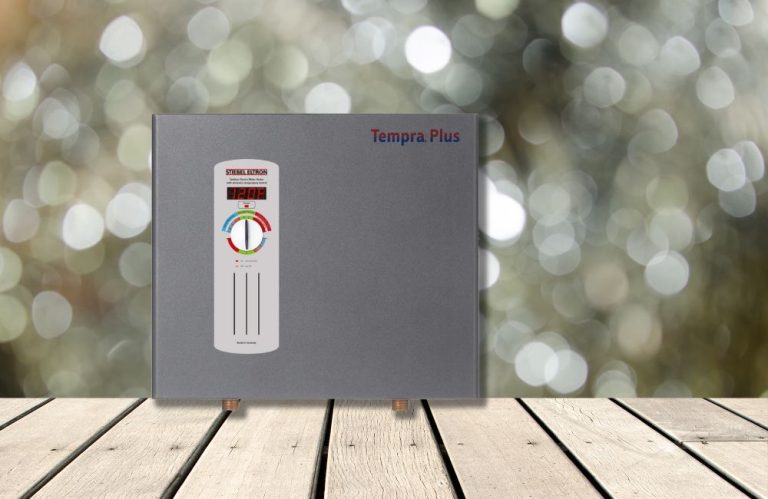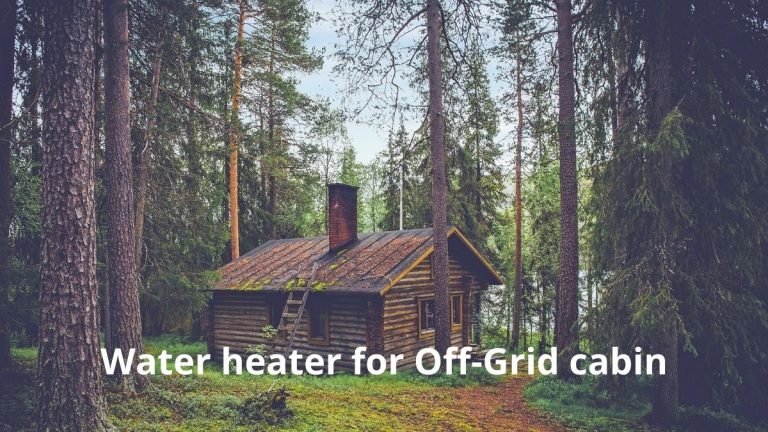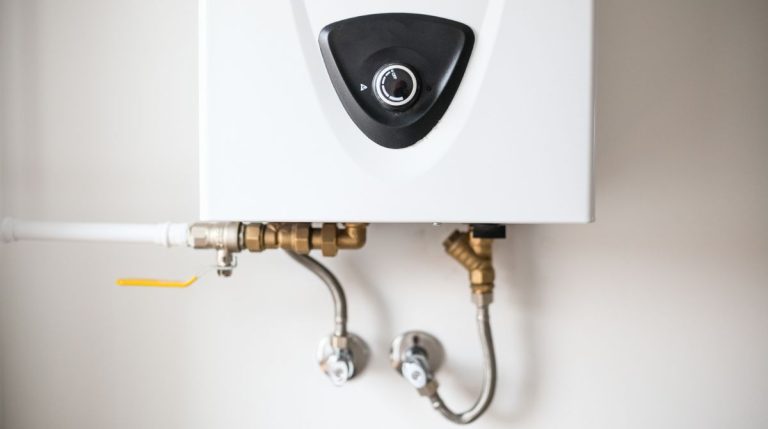7 Best Whole House Electric Tankless Water Heater (with guide) in 2022
I recently helped one of my clients choose the right whole-house electric tankless water heater and I wondered how many other people like him might need help with it. And so, I wrote this in-depth review & guide. If you are confused and looking for the best whole-house electric tankless water heater that’s perfect for your home then you are at the right place.
There are a lot of benefits involved with electric tankless water heaters like the luxury of unlimited hot water and upto 30% money-saving on heating every month.
Electric units are also cheaper and more energy-efficient than gas-powered water heaters. These are easier and can be cheaper to install.
The thing with electric water heaters however is that they may require a higher electric service capacity with upto 300Amp for 36kW water heaters.
With that said, I have spent more than 3 hours researching and analyzing 23 different whole-house electric tankless models for houses with different sizes and needs.
REVIEWS: 7 best whole house electric tankless water heaters
1.Stiebel Eltron 29kW Plus

- Activation flow rate: 0.77GPM
- Max Flow Rate: 3.1 – 6 GPM @ 105°F
- Service Required: 200 Amp
- Max temperature: 140°F
- Breaker required: 3 X 40A double pole
The first one in our list of best whole-house electric tankless water heaters is the Stiebel Eltron’s Plus series 29kW model. It’s a very compact and stylish water heater that can fit in a small space.
The unit is equipped with triple copper heating chambers that fast heat water with a flow rate of upto 6 GPM at 105°F outlet temperature. That means you can run three showers and a faucet at the same time. So if you have a big home with multiple bathrooms and hot tubs then the Stiebel Eltron 29kW is a good option. But be aware that the flow rate will depend on groundwater and your desired water temperature.
If you are from northern states with freezing temperatures then the Max flow rate will be in the range of 3 GPM or less and you might not be able to use more than a shower and faucet at the same time.
The unit features an advanced flow control sensor that maintains steady water temperature when demand exceeds capacity by lowering the flow rate (rather than reducing temperature). It’s a helpful feature to prevent surprise cold showers.
But what I didn’t like about this model is its high 0.77GPM activation flow rate. You basically won’t get hot water if you are only half-open the tap or get cold water if you slow the shower while soaping yourself up. Stiebel Eltron Tempra 24 plus is another dependable tankless model that we have already reviewed that you can check out.
Pros
- Easy to access digital interface and temperature control
- Up to 99% energy efficient
- Surprise preventing advanced flow control tech
- Best for big houses with multiple showers running at the same time
- Max flow rate of upto 6GPM at 105°F
- ANSI/UL 499 certified
- Extremely quiet performance
- Upto 7-year leakage and 3-year part warranty
Cons
- The minimum activation flow is very high at 0.77 GPM which can limit your hot water access.
2. Ecosmart Eco 27kW

- Activation flow rate: 0.3 GPM
- Max Flow Rate: 2.7 – 6.5 GPM @ 105° F
- Service Required: 200 Amp
- Breaker required: 3 X 40A double pole
- Energy efficiency: 99.8%
The Ecosmart Eco 27 is another strong contender for whole-house electric tankless water heating. It’s almost the same as the Stiebel model in power except for a few key differences.
This tankless water heater is comparatively cheaper without compromising on quality. It has one of the lowest activation flow rates of a mere 0.3GPM – no more cold water when half opening the tap.
It comes with a neat digital temperature control display. The tankless water heater offers the maximum flow rate in the range of 2.7 to 6.5 GPM at 105°F. Of course, this flow depends on the inlet and your set outlet temperature. So if you live in southern states like Florida where inlet temperature is in the range of 77°F then you can expect 6.5GPM – sufficient for large families with 4 bathrooms running simultaneously. But if you are in the North region with freezing temperatures then the same model won’t accommodate more than a shower and a few faucets at the same time.
As per the manufacturer, the Ecosmart Eco 27 is extremely energy efficient with 99.8% EF thanks to its self-modulation technology that only uses as much energy as required for a given amount of water.
The unit equips three copper heat exchangers with 3X emersion heating elements of 9kW each. It draws a maximum 112Amp that requires 200Amp electric service with three 40Amp double pole breakers for smooth operation.
Pros
- Highly Energy-saving self-modulation technology
- Low activation flow of only 0.3GPM
- A high max flow rate of 6.5GPM (depends on inlet temp)
- Up to 99.8% energy efficiency
- The digital control screen for ease of use
- Lifetime warranty on parts when installed by certified professionals
- Lead-free compliance and certified as per ANSI 372
Cons
- For DIYers, if you don’t want to void the warranty then get this unit installed by a professional technician.
- There’s a little time lag to get hot water so the first person who washes his hand gets cold water.
3.RINKMO El 18kW

- Activation flow rate: 0.4GPM
- Max flow rate: 1.8 to 4.5GPM at 105°F
- Service required: 100Amp
- Breaker required: 2X40A double pole
The next one on our list of best whole-house electric tankless water heaters is the RINKMO EL18. This 18kW model is ideal for small families of upto 2-3 people.
It can provide hot water with a max flow rate in the range of 1.8 to 4.5 GPM at 105°F. The flow rate will depend on your inlet and outlet temperature i.e. temperature rise. If you live in Southern states with inlet water temp 72°F and want 120°F hot water then you can expect a good ~3.5GPM flow which is sufficient to run two showers or one shower and 3 faucets simultaneously. But if you are in a northern state with a freezing temperature then you might not be able to run more than a single shower at a time and will want to consider the 24kW or 37kW model.
The good thing with RINKMO EL18 is the activation flow rate which is quite low at only 0.4 GPM which is water and energy-saving.
RINKMO EL18 comes with a very useful smart modulation technology that equips flow and temperature sensors that shuts the heater when extra hot water is detected and alarm when water is not as hot as desired. It’s safe enough and ideal to shower babies and kids.
The unit is only suitcase-sized with a very compact space-saving design. The manufacturer also claims that the unit is free from catching any corrosion and mineral scaling. But I think you can expect to flush it less often than not flushing at all.
Pros
- Smart modulation sensor for total safety from scalding
- 0.4 GPM low activation flow that helps save energy and water
- Compact in size that can fit anywhere
- Saves upto 50% energy compared to tank water heaters.
Cons
- Not ideal for big families living in colder states.
- Only a 2-year warranty from the manufacturer which is less than the industry standard
4. Rheem RTEX-24

- Activation flow rate:0.3 GPM
- Max flow rate: 2 to 5.9 GPM
- Breaker required: 3X40A double pole
- Service required: 200Amp
- 99.8% electrical efficiency
If you are looking for something American, something trusted and durable then you might want to consider Rheem electric tankless water heater.
The RTEX-24 model is ideal for medium size family living in southern states with upto three showers running at the same time. It has one of the lowest, 0.3 GPM activation flow which is quite impressive. This tankless unit can heat water at upto 5.9 GPM flow rate at 105°F.
However, as said earlier, the flow rate completely depends on your inlet as well as your desired outlet temperature. If you are from Minnesota or Alaska with under 40°F inlet temperature then you can expect 2 GPM max flow at 105°F outlet temperature meaning you can run a shower and faucet simultaneously.
Rheem tankless water heater comes with a digital temperature display and control knob for precise temperature adjustment 1° at a time.
It involves three heating elements with a brass top that ensures durability and ease of replacement should the need arise.
It has self-modulation sensors that automatically adjust the energy required to heat the water based on inlet temperature. It’s quite useful for colder places.
I would highly recommend this tankless water heater if you are a small family living in the far north or a big one of 4-5 people in Florida. But also know that this 24kW model requires a 200Amp service panel and triple 40A double pole breakers.
Pros
- Easy to use and install design
- Impress low activation flow rate at 0.3 GPM
- Self-modulating that’s convenient and saves energy
- Upto 5 years of warranty
Cons
- In cold states, the max flow rate drops and won’t be sufficient for large families with high demand
- People are complaining of inconsistent temperature when flow rate capacity reaches
5. Rheem RTEX-18

- Activation flow rate: 0.3 GPM
- Max flow rate: 1 to 3.1 GPM
- Breaker required: 1X60A
- Service required: 100Amp
Yes, you are right, this is another electric tankless water heater in this list from Rheem.
The RTEX-13 unit is NOT for people in Alaska or Minnesota or anywhere near there. If the grounder water temperature is in the range of 35° to 50°F then you won’t get a good flow.
I’m recommending this tankless model to people living in warmer states like Florida or Texas or Arizona where the inlet temperature is high. You can easily expect the flow rate in the range of 3 GPM which is, sufficient for a family of 2-3 and can run a shower and multiple faucets and washers at the same time. It also has a low activation flow rate at 0.3 GPM just like the previous model.
The unit is equipped with a dual copper heating exchanger and a durable emersion element that’s also easily replaceable. It has easy to access temperature control knob and a clean digital display.
It’s not much of a burden on your service panel with only a single 60A breaker required.
Pros
- Ideal for small houses with warmer inlet temperature
- Small and compact design
- Enjoy a low activation flow rate of 0.3 GPM
- UL499 certified
- Upto 99.8% energy efficient
- 5 years of brand warranty
Cons
- Not good for states with cold climate
- Not for a lot of fixtures running at the same time
- People are complaining of inconsistent temperature when flow rate capacity reaches
6.Eemax EEM24036 36kW

- Activation flow rate: 0.3 GPM
- Max flow rate: 3.8 to 8.8 GPM @105°F
- Service required: 300Amp
- Breaker required: 4X40A double pole breaker
- 99.8% energy efficient
The Eemax EEM24036 is one of the most powerful electric tankless water heaters out there for residential use. This 36kW model is perfect for large families, especially for those living in northern regions like Alaska and Minnesota where the temperature drops below 40°F. You will easily be able to get at least 3.8 GPM flow at those locations. That’s two water-saving showers and a sink running at the same time.
That said, the Eemax features a setup of four copper heat exchangers with a brass top, making it durable and long-lasting. It has a neat digital temperature display with easy-to-use knob control – 1° at a time. The tankless water heater boasts a self-modulation sensor that helps save energy by controlling the energy required to heat the water.
Since Eemax EEM24036 is one of the biggest water heaters out there, the service demand is also a bit high. It can draw upto 150 Amps and so it’s advised that you have 300Amp service with enough space in your breaker panel to allocate four 40Amp double pole breakers specifically for the heater.
It’s a must-have electric tankless water heater if you have a big family with multiple bathrooms, living in a colder region, and can allocate the electric service. But if you are from a rather warmer state then you are better off with a 24kW or even 18kW model.
Pros
- It has a self-modulation sensor that saves energy
- Easy to install design
- A very low activation flow rate of only 0.3 GPM
- Can produce hot water at more than 3.8 GPM even in a colder climate
- Neat digital display with an easy control knob
- UL 499 certified
- Upto 5 years warranty on leakage and 1 year on parts
Cons
- Can take a little time to adjust and provide consistent hot water
- It can get pretty expensive to install if you don’t already have 300Amp service
- Some customers are complaining of temperature fluctuations when the heater is used at its full capacity
7. Marey Eco180 18kW

- Activation flow rate: 0.85 GPM
- Max flow rate: 2 to 4.4 GPM
- Service required: 150Amp
- Breaker required: 2X50A double pole
- 98% energy efficient
The last one on the list is Marey’s Eco180 electric tankless water heater. This water heater has an identical water heating capacity compared to other 18kW models in this list.
For instance, it can heat water at upto 4.4 GPM capacity at 105°F in the Southern region which is enough to run triple showers at the same time, or at 1.5 GPM capacity in Northern US which translates to one shower at a time.
What sets this model apart from the rest is its heating chambers. As per the manufacturer, the unit features patented stainless steel heating technology which greatly reduces corrosion as well as the build-up of calcium sediments which means less maintenance and flushing.
And what I didn’t like about Marey Eco180 is its high activation flow rate; 0.85 GPM. It’s not just a waste of energy but also of water. Simply put, you won’t be able to draw hot water from the 0.5 GPM faucet since the heater won’t start.
As for the electric part, the unit will draw 75 Amps at Max, you will need 150Amp service and two 50A double breakers.
Pros
- Large digital temperature control display
- Rusting and sediment build-up prevent design
- 4.4 GPM of decent flow rate in warm locations
- 60% more energy-efficient than the tank counterpart
- Upto 5 years of warranty
Cons
- A very high activation flow rate of 0.85 GPM
- The poor flow rate in the North, colder region
- Need to be installed within 40 feet range of hot water fixture
BUYING GUIDE: For the whole house electric tankless water heaters
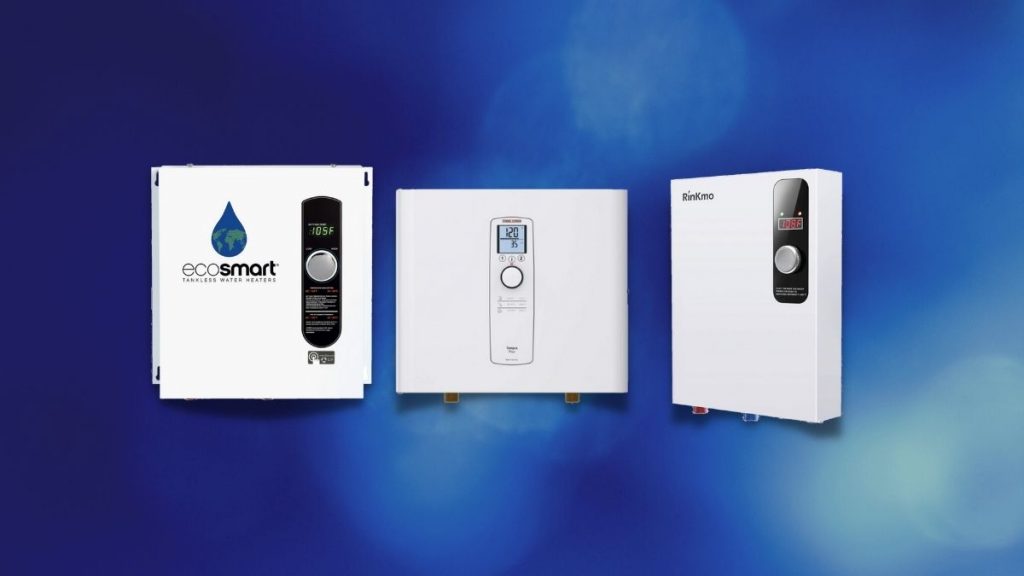
Here’s the basic guide for beginners to help them understand electric tankless water heaters and what to look for when shopping
What is an electric tankless water heater?
These are the next-generation water heaters. Unlike tank water heaters that heat and store hot water (causing standby heat and energy loss), tankless models heat water instantly and on demand and are usually upto 50% more energy-efficient than tank water heaters. A tankless water heater can provide an unlimited supply of hot water.
The system doesn’t require any venting, is compact (usually as big as a briefcase), is space-saving, and can be mounted on the wall.
Sizing
Properly sizing the tankless water heaters is important. If you buy a unit that’s too small for your house then you might get a low flow rate or not enough warm water. Or if you buy too big, bigger than you need then you will only overspend.
To properly size a tankless, find out how many hot water fixtures you can use at the same time.
For example, say your family uses a shower(1.5 GPM), a kitchen sink (1 GPM), and a washer(1.5 GPM) all at the same time in the morning then:
1.5+1+1.5=4
Thus, the tankless water heater you need in this situation should have a 4 GPM flow rate.
Also, remember that the flow rate varies based on inlet and outlet temperature. The same heater that has a 4 GPM flow in Florida will have a far less flow rate in Alaska or Minnesota in the range of 1.5 GPM or something. It’s due to the low inlet temperature there. Simply put, the colder climate you live in, the bigger the water heater you need.
You can also use low-flow fixtures to solve such problems.
Temperature rise
It’s the degrees of temperature that need to be raised of incoming cold water.
The colder the water, the higher the temperature rise will be. For example, say the water in Alaska is 37°F that needs to be warmed to 105°F (common hot water temperature) then the temperature rise will be 68°F.
Temperature rise has a direct impact on the maximum flow rate you can get. The higher the temperature rise, the lower the flow rate will be. And vice versa.
Activation flow rate (Min. flow rate)
It is what it sounds like. The activation flow rate is the minimum water flow rate at which the heater starts. Most tankless water heaters feature a sensor that activates the heater when a certain amount of water passes through it.
If a unit has a 0.5 GPM activation rate and you half-open the tap that’s drawing water at 0.3 GPM then you won’t get hot water as the heater won’t start. It’s to protect the element as well as the user from getting scalds. Try to find a tankless unit with the lowest activation flow rate.
Electric service and breaker panel
Electric tankless water heaters are high-wattage appliances meaning you might need a high Ampere service. Try matching the Amps required for your desired heater with the service at your home. The possibility is that you might need to up your electric service. Also, make sure you have enough space in the breaker panel to allocate dedicated breakers for the water heater. I would advise you to consult with your local electrician about an upgrade before buying any water heater. Learn about the difference between electric vs gas tankless water heater here.
Installation and warranty
I know a lot of DIYers will prefer installing the unit themself and there’s nothing wrong with it. You can save a good chunk of money in the process as well. Just make sure you have good knowledge of electrics and plumbing as you will be dealing with 240 volts. If unsure, let the professional handle it.
And another important thing is that a lot of tankless brands have conditions that their warranty voids if the unit is installed by an uncertified person.
Maintenance
Tankless water heaters can last twice as long as tank type, usually 20+ years if maintained properly.
If the water at your place is hard then more frequent maintenance will be required as sediments build up fast inside. You can also install a water softener to slow down build-up and reduce the required maintenance frequency.
I will also advise installing valves, on the inlet and outlet, so it’s easier to flush the heating chamber.
Legal code
Okay, now this is also important. Before you buy any electric tankless water heater, you will want to make sure that it’s permissible to use it as per the local code.
Refer to the water heater buying guide for an in-depth understanding.
Over to you!
Tankless water heaters are becoming more and more popular due to their many benefits. If you’re in the market for a new water heater, an electric tankless model may be the best option for your home. We’ve outlined the pros and cons of these heaters so that you can make an informed decision before making your purchase. Check out these top 30Amp tankless water heaters if you need a smaller unit for your RV or garage. And let us know if you have any questions about tankless models or any other type of water heater.
FAQs: Related to whole house electric tankless water heater
What brand of electric tankless water heater is the best?
There are a few decent electric tankless water heater brands that are reliable and long-lasting. In my opinion, Stiebel and Rheem manufacture the highest quality water heating appliances.
Are whole-house tankless water heaters worth it?
Yes, whole-house electric tankless water heaters are worth it if properly sized. u003cbru003eUnlike tank units, you get an unlimited supply of hot water, and also can save you at least 30% on water heating energy costs. Refer to the sizing section of the buying guide above for proper sizing.
Can a tankless water heater work for the whole house?
Usually, it does. If sized properly, you can use a single tankless water heater for your whole house. If you live in places like Alaska with a big family and high hot water demand then you can buy an Eemax 36kW unit that can heat water at a 3.8 gallons per minute rate. If you live in a warmer climate then you can go with a smaller one like 24 or 18kW.
What is the highest GPM electric tankless water heater?
The highest GPM you can get completely depends on your inlet and desired outlet temperature. One of the most powerful residential electric tankless water heaters is the Eemax 36kW which can provide upto 8.8 GPM flow rate in Florida and a 3.8 GPM maximum in Alaska or Minnesota.

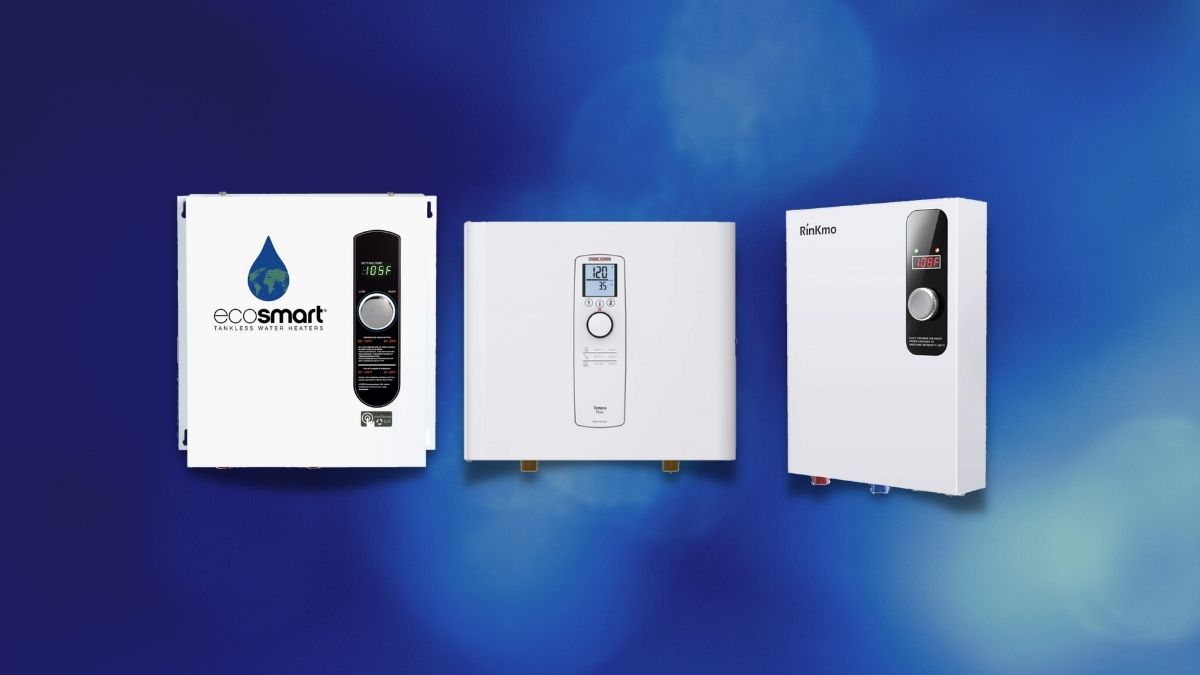
![3 Best Stiebel Eltron Tankless Water Heaters Reviewed [2023]](https://homewatertech.com/wp-content/uploads/2022/12/Best-Stiebel-Eltron-Tankless-Water-Heaters-Reviews-768x432.jpg)

